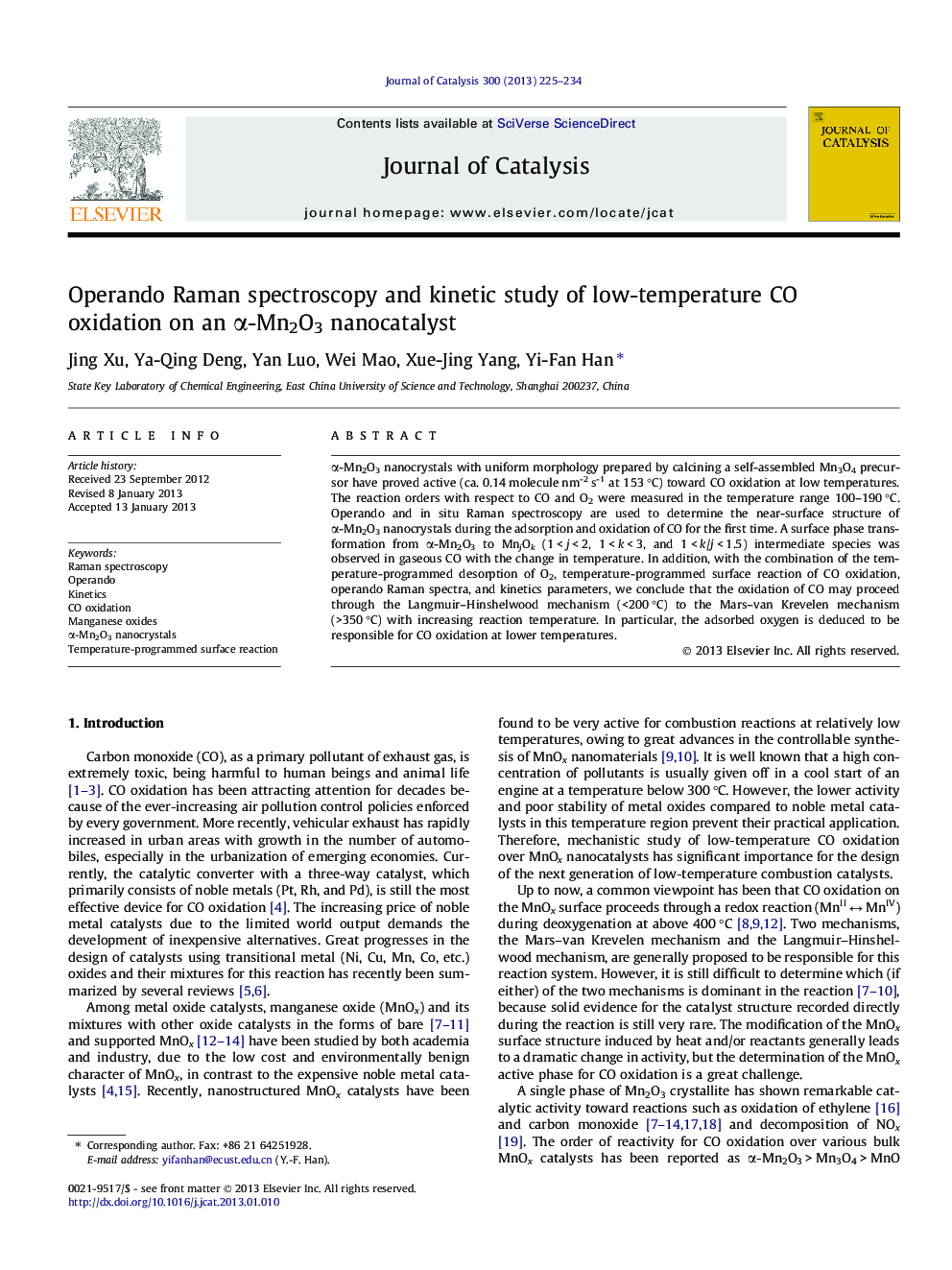| Article ID | Journal | Published Year | Pages | File Type |
|---|---|---|---|---|
| 61369 | Journal of Catalysis | 2013 | 10 Pages |
α-Mn2O3 nanocrystals with uniform morphology prepared by calcining a self-assembled Mn3O4 precursor have proved active (ca. 0.14 molecule nm-2 s-1 at 153 °C) toward CO oxidation at low temperatures. The reaction orders with respect to CO and O2 were measured in the temperature range 100–190 °C. Operando and in situ Raman spectroscopy are used to determine the near-surface structure of α-Mn2O3 nanocrystals during the adsorption and oxidation of CO for the first time. A surface phase transformation from α-Mn2O3 to MnjOk (1 < j < 2, 1 < k < 3, and 1 < k/j < 1.5) intermediate species was observed in gaseous CO with the change in temperature. In addition, with the combination of the temperature-programmed desorption of O2, temperature-programmed surface reaction of CO oxidation, operando Raman spectra, and kinetics parameters, we conclude that the oxidation of CO may proceed through the Langmuir–Hinshelwood mechanism (<200 °C) to the Mars–van Krevelen mechanism (>350 °C) with increasing reaction temperature. In particular, the adsorbed oxygen is deduced to be responsible for CO oxidation at lower temperatures.
Graphical abstractKinetics with the combination of operando and in situ Raman spectroscopy is used to study the mechanism of CO oxidation over on α-Mn2O3 nanocrystal catalyst. CO oxidation may proceed through the Langmuir–Hinshelwood mechanism (<200 °C) to the Mars–van Krevelen mechanism (>350 °C). A reversible phase transformation on an α-Mn2O3 surface can be observed during the adsorption and oxidation of CO.Figure optionsDownload full-size imageDownload high-quality image (112 K)Download as PowerPoint slide
